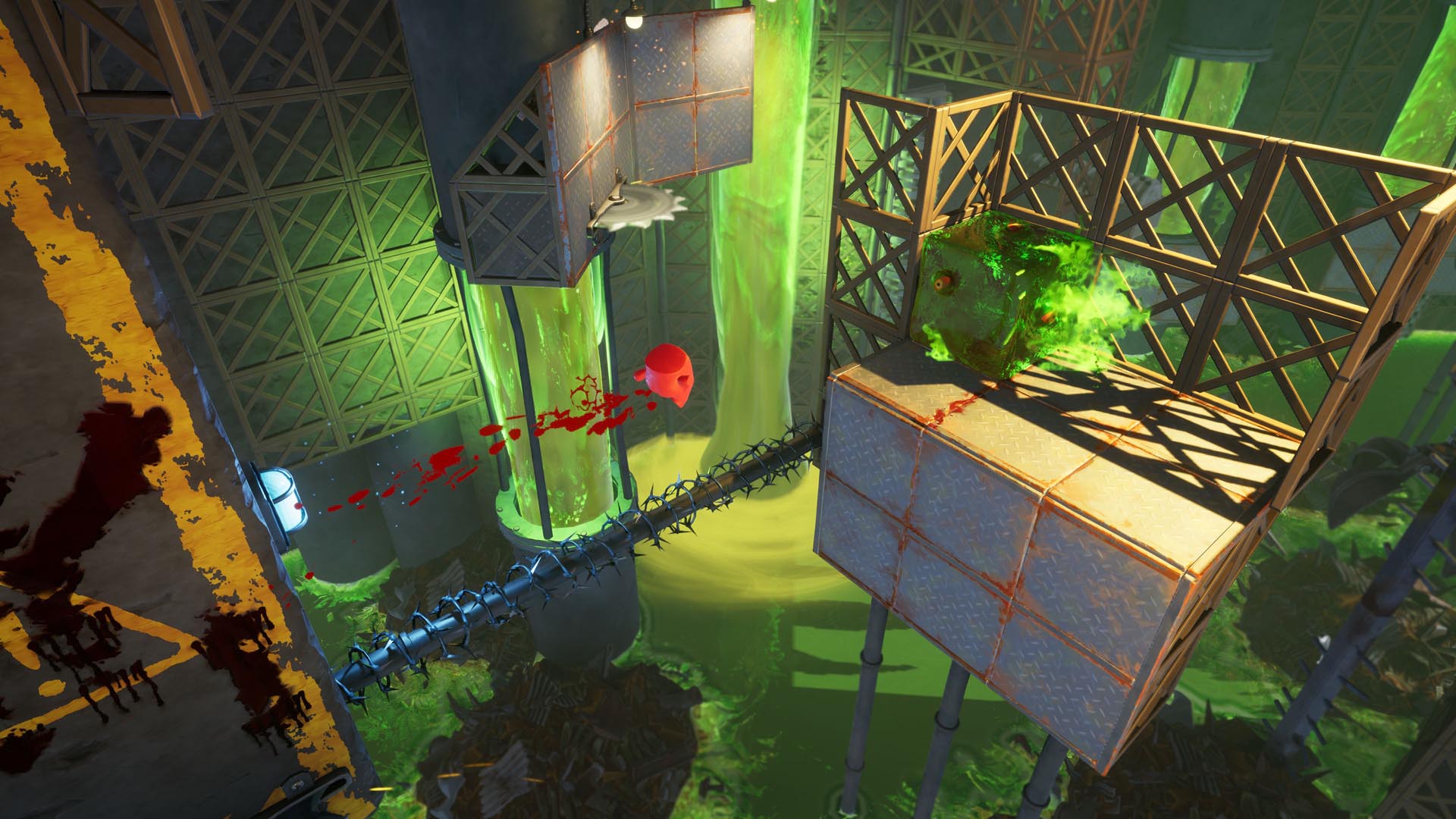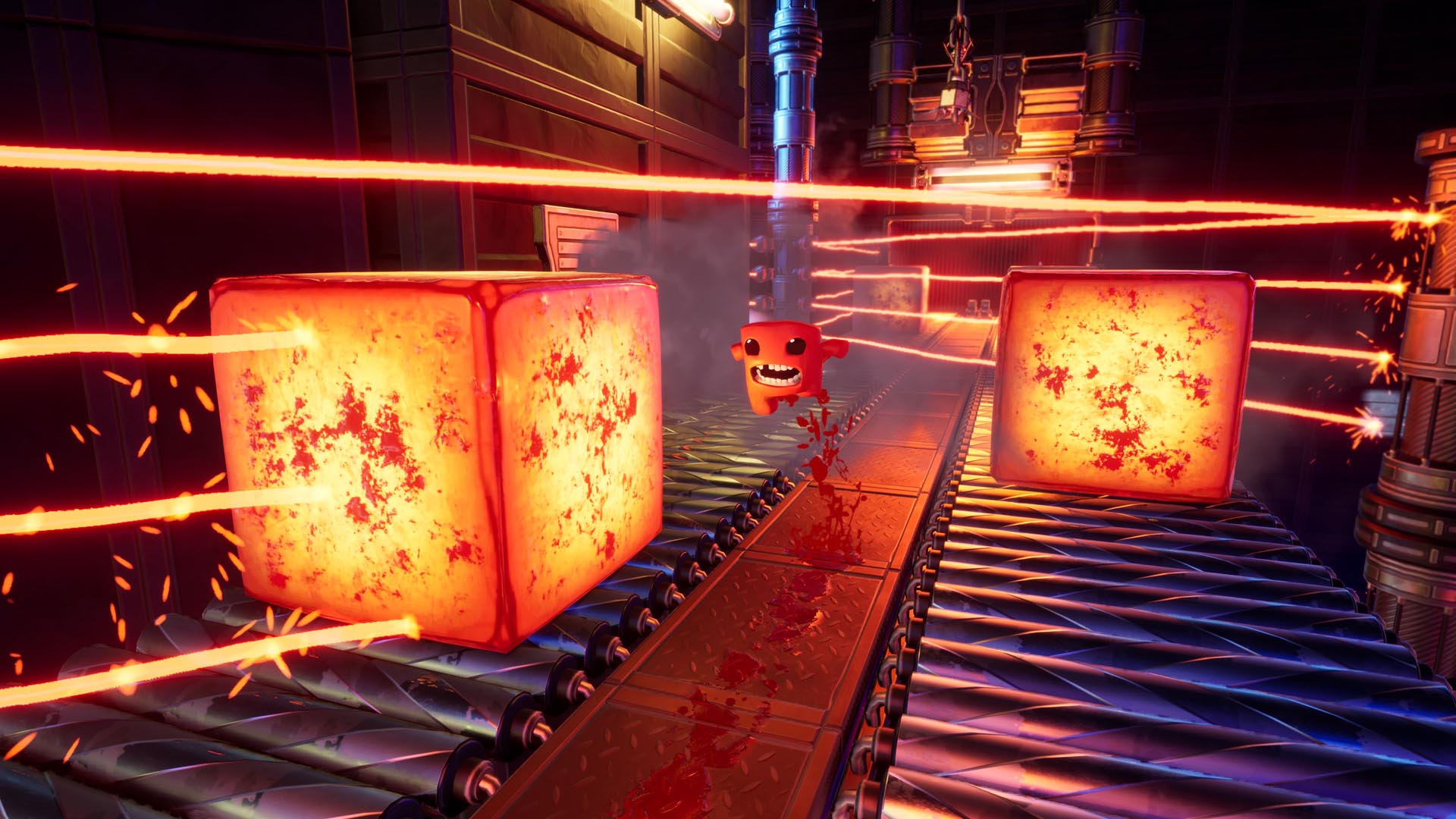Tremendous Meat Boy has been a herald, a figurehead, and an instance of what indie dev groups can obtain. It confirmed that small, bizarre video games might make a big effect. The sport was punk rock – quick, tough, with odd humor and unusual characters.
What began as a Flash sport in 2008 changed into a narrative of indie success in 2010 that paved the best way for – and impressed – many sport devs who now inform success tales of their very own. That’s why it feels solely proper that Sluggerfly, our small indie crew of seven, took on this subsequent installment within the franchise, Tremendous Meat Boy 3D.
Having developed the well-received 3D platformer Hell Pie, in addition to the Ben and Ed sequence – video games praised for his or her tight controls, quirky, exaggerated humor and “indie-spirit” – Tremendous Meat Boy 3D is being developed by our crew of very excited, very honored builders in shut collaboration with Group Meat’s Tommy Refenes.
“A number of years in the past I performed Hell Pie. I actually preferred it, and I hoped Sluggerfly can be fascinated about doing a 3D model of Tremendous Meat Boy,” Refenes mentioned. “To my shock, they had been followers of Meat Boy and had been enthusiastic about the potential for engaged on Tremendous Meat Boy 3D. Their pleasure actually shines by with the work they’ve accomplished. They’ve pulled off a conversion from 2D to 3D that’s on par with the emotions I had the primary time I performed Metroid Prime. They’ve nailed it.”
Being chosen to work on considered one of indie gaming’s extra legendary IPs wasn’t simply extremely humbling and thrilling for us – but additionally fairly intimidating. How can we do justice to the model whereas providing innovation?
Our sport began as a prototype that explored whether or not Tremendous Meat Boy might work as a 3D platformer within the first place. With such a giant change to a franchise that had been solely 2D thus far, it was important for us to not lose the core features that make a Meat Boy sport a Meat Boy sport. The principle areas the place this translation into one other dimension was most noticeable had been the digicam motion, depth notion, and controls. Can you actually seize that pace and motion in 3D with out making sacrifices on both entrance?
Including a 3rd dimension naturally will increase the complexity of no matter you’re engaged on. There’s a digicam to handle, which ideally shouldn’t get in the best way of the controls. In 3D video games, gamers usually management the digicam themselves – however with Meat Boy’s fast-paced motion, the crew shortly realized that wouldn’t work. A dynamic or player-controlled digicam simply couldn’t sustain with the tempo Meat Boy requires. It created extra issues than it solved, so after testing completely different choices, we determined to maintain the digicam static, permitting for a larger give attention to pace and motion.

Talking of added complexity as a result of third dimension – there may be a further perceptual problem for gamers – all the pieces tends to really feel much less crisp and extra floaty. The prototype gave the crew time to sort out the implementation of horizontal motion – particularly with the massive quantity of wall-running proven within the trailer – and, on a extra normal stage, how you can translate motion in a method that makes gamers really feel fully answerable for the place they’re and the way they transfer.
Tremendous Meat Boy 3D is a sport that wants tight and responsive controls if it desires to seize and characterize the guts of the franchise. So, going hand in hand with a participant’s notion of their character’s motion are, in fact, the controls themselves. Each participant motion now occurs not solely vertically but additionally horizontally. With the added spatial depth, the sensation of precision and consciousness can get misplaced. To assist stop this, we’ve carried out methods to steadiness the liberty of gamers with constructions that help them in feeling in management. In 3D, precision turns into a lot tougher to take care of, so placing in small guidelines—like fastened angles or restricted motion instructions—helps loads.

One among these is eight-directional motion on the stick, which Tommy urged at one level throughout manufacturing. It provides useful construction—actions are a bit extra predictable and constant, which is helpful when gamers are flinging themselves by ranges at excessive pace. And on the subject of ranges: one thing the crew discovered actually vital was utilizing 45-degree angles all through stage design as a substitute of the preliminary, extra natural structure. It helps gamers anticipate and plan their strikes, particularly at excessive pace. One other method to make sure gamers realize it’s their very own fault once they mess up—and never the sport’s—is the small however useful addition of a “floor circle” to mark your present place on the bottom. This actually helps with spatial consciousness, particularly when Meat Boy is up excessive within the air or removed from geometry.

We at Sluggerfly, Headup, and Group Meat actually hope you take pleasure in this new model of what you’ve come to know and love from earlier Meat Boy video games. With Tremendous Meat Boy 3D, we’ve poured our hearts into honoring the legacy of the franchise whereas pushing it into daring new territory—we will’t wait so that you can play it and see the place Meat Boy lands subsequent.
Wishlist Tremendous Meat Boy 3D now on the Xbox Retailer and prepare to die once more, and once more, and once more when Tremendous Meat Boy 3D launches for Xbox Collection X|S and Xbox on PC early 2026. You can even play it day one through Recreation Cross.









